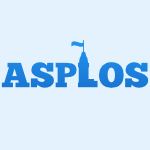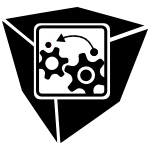76 papers:
 CHI-2015-JohnsonRMT #collaboration #how
CHI-2015-JohnsonRMT #collaboration #how- Can You See Me Now?: How Field of View Affects Collaboration in Robotic Telepresence (SJ, IR, BM, LT), pp. 2397–2406.
 CSCW-2015-Huh #community #health #online #thread
CSCW-2015-Huh #community #health #online #thread- Clinical Questions in Online Health Communities: The Case of “See your doctor” Threads (JH), pp. 1488–1499.
 SIGIR-2015-HsiehLY #network #social
SIGIR-2015-HsiehLY #network #social- I See You: Person-of-Interest Search in Social Networks (HPH, CTL, RY), pp. 839–842.
 ICST-2015-MahajanH15a #debugging #html #named
ICST-2015-MahajanH15a #debugging #html #named- WebSee: A Tool for Debugging HTML Presentation Failures (SM, WGJH), pp. 1–8.
 SCAM-2014-YooBE #slicing
SCAM-2014-YooBE #slicing- Seeing Is Slicing: Observation Based Slicing of Picture Description Languages (SY, DB, RDE), pp. 175–184.
 CHI-2014-DorkCD #monad
CHI-2014-DorkCD #monad- Monadic exploration: seeing the whole through its parts (MD, RC, MDR), pp. 1535–1544.
 CHI-2014-LucaHZMSHS #authentication #smarttech
CHI-2014-LucaHZMSHS #authentication #smarttech- Now you see me, now you don’t: protecting smartphone authentication from shoulder surfers (ADL, MH, EvZ, MEM, BES, HH, MS), pp. 2937–2946.
 CHI-2014-MentisCS #learning
CHI-2014-MentisCS #learning- Learning to see the body: supporting instructional practices in laparoscopic surgical procedures (HMM, AC, SDS), pp. 2113–2122.
 CHI-2014-PielotOKO #mobile #predict
CHI-2014-PielotOKO #mobile #predict- Didn’t you see my message?: predicting attentiveness to mobile instant messages (MP, RdO, HK, NO), pp. 3319–3328.
 CSCW-2014-ShiltonKF #how #social
CSCW-2014-ShiltonKF #how #social- How to see values in social computing: methods for studying values dimensions (KS, JAK, KRF), pp. 426–435.
 CHI-2013-CafaroPLRR #exclamation #interactive
CHI-2013-CafaroPLRR #exclamation #interactive- I see you there!: developing identity-preserving embodied interaction for museum exhibits (FC, AP, LL, JR, JR), pp. 1911–1920.
 CHI-2013-FoshBRKB
CHI-2013-FoshBRKB- see me, feel me, touch me, hear me: trajectories and interpretation in a sculpture garden (LF, SB, SR, BK, PB), pp. 149–158.
 CHI-2013-LeeKYHP #adaptation #video
CHI-2013-LeeKYHP #adaptation #video- A preliminary investigation of human adaptations for various virtual eyes in video see-through HMDS (JHL, SYK, HCY, BKH, JHP), pp. 309–312.
 CHI-2013-LeeOIB #2d #3d #interactive #named
CHI-2013-LeeOIB #2d #3d #interactive #named- SpaceTop: integrating 2D and spatial 3D interactions in a see-through desktop environment (JL, AO, HI, CNB), pp. 189–192.
 CHI-2013-MentisJ
CHI-2013-MentisJ- Seeing movement qualities (HMM, CJ), pp. 3375–3384.
 CHI-2013-Shirali-ShahrezaPBG #interactive #mobile
CHI-2013-Shirali-ShahrezaPBG #interactive #mobile- SeeSay and HearSay CAPTCHA for mobile interaction (SSS, GP, RB, YG), pp. 2147–2156.
 HIMI-LCCB-2013-LindholmBN #interactive
HIMI-LCCB-2013-LindholmBN #interactive- I See, Please Tell Me More — Exploring Virtual Agents as Interactive Storytellers (DL, EPB, TN), pp. 89–98.
 KDD-2013-LeeLM #evolution #keyword #named #social
KDD-2013-LeeLM #evolution #keyword #named #social- KeySee: supporting keyword search on evolving events in social streams (PL, LVSL, EEM), pp. 1478–1481.
 CHI-2012-BirnholtzBF #behaviour
CHI-2012-BirnholtzBF #behaviour- Do you see that I see?: effects of perceived visibility on awareness checking behavior (JPB, NB, SRF), pp. 1765–1774.
 CHI-2012-HilligesKIWW #3d #interactive #named
CHI-2012-HilligesKIWW #3d #interactive #named- HoloDesk: direct 3d interactions with a situated see-through display (OH, DK, SI, MW, AW), pp. 2421–2430.
 CHI-2012-HuangWB #web
CHI-2012-HuangWB #web- User see, user point: gaze and cursor alignment in web search (JH, RW, GB), pp. 1341–1350.
 CHI-2012-KarnikMS #multi #named
CHI-2012-KarnikMS #multi #named- MUSTARD: a multi user see through AR display (AK, WWMC, SS), pp. 2541–2550.
 CHI-2012-KlempererLMSUBCGR #data access #exclamation #using
CHI-2012-KlempererLMSUBCGR #data access #exclamation #using- Tag, you can see it!: using tags for access control in photo sharing (PFK, YL, MLM, MS, BU, LB, LFC, NG, MKR), pp. 377–386.
 CHI-2012-SongQ #representation
CHI-2012-SongQ #representation- Representing “too small to see” as “too small to see” with temporal representation (MS, CQ), pp. 1441–1450.
 CHI-2012-ZhangYELBI #lightweight
CHI-2012-ZhangYELBI #lightweight- See me, see you: a lightweight method for discriminating user touches on tabletop displays (HZ, XDY, BE, HNL, PB, PI), pp. 2327–2336.
 CSCW-2012-SosikZC #how
CSCW-2012-SosikZC #how- See friendship, sort of: how conversation and digital traces might support reflection on friendships (VSS, XZ, DC), pp. 1145–1154.
 ICPR-2012-RayAZ #programming #segmentation
ICPR-2012-RayAZ #programming #segmentation- Seeing through clutter: Snake computation with dynamic programming for particle segmentation (NR, STA, HZ), pp. 801–804.
 SIGIR-2012-AzzopardiDM #named #video
SIGIR-2012-AzzopardiDM #named #video- YooSee: a video browsing application for young children (LA, DD, KAM), p. 1017.
 SIGIR-2012-ZhangSCC #keyword #named #performance #query
SIGIR-2012-ZhangSCC #keyword #named #performance #query- See-to-retrieve: efficient processing of spatio-visual keyword queries (CZ, LS, KC, GC), pp. 681–690.
 MoDELS-2012-AboussororOO #fault #modelling #simulation #visualisation
MoDELS-2012-AboussororOO #fault #modelling #simulation #visualisation- Seeing Errors: Model Driven Simulation Trace Visualization (EAA, IO, IO), pp. 480–496.
 MoDELS-2012-AboussororOO #fault #modelling #simulation #visualisation
MoDELS-2012-AboussororOO #fault #modelling #simulation #visualisation- Seeing Errors: Model Driven Simulation Trace Visualization (EAA, IO, IO), pp. 480–496.
 REFSQ-2012-PoortMWV #architecture #how #non-functional #requirements
REFSQ-2012-PoortMWV #architecture #how #non-functional #requirements- How Architects See Non-Functional Requirements: Beware of Modifiability (ERP, NM, IvdW, HvV), pp. 37–51.
 FSE-2012-BookGG #interactive
FSE-2012-BookGG #interactive- Seeing the forest and the trees: focusing team interaction on value and effort drivers (MB, SG, VG), p. 30.
 SCAM-2011-SfayhiS #analysis #interactive #visualisation #what
SCAM-2011-SfayhiS #analysis #interactive #visualisation #what- What You See is What You Asked for: An Effort-Based Transformation of Code Analysis Tasks into Interactive Visualization Scenarios (AS, HAS), pp. 195–203.
 CSCW-2011-GergleC #collaboration #eye tracking #mobile #using #what
CSCW-2011-GergleC #collaboration #eye tracking #mobile #using #what- See what I’m saying?: using Dyadic Mobile Eye tracking to study collaborative reference (DG, ATC), pp. 435–444.
 DUXU-v2-2011-YasumaN #artificial reality #question
DUXU-v2-2011-YasumaN #artificial reality #question- User Characteristic-Based Information-Providing Service for Museum with Optical See-Through Head-Mounted Display: Does It Evoke Enthusiasm? (YY, MN), pp. 234–242.
 DUXU-v2-2011-Zeller #design #what
DUXU-v2-2011-Zeller #design #what- What You See Is What You Don’t Get: Addressing Implications of Information Technology through Design Fiction (LZ), pp. 329–336.
 HCI-MIIE-2011-WangZYZSP #what
HCI-MIIE-2011-WangZYZSP #what- Believe What You Hear, Not What You See — Vision Interferes with Auditory Route Guidance in Complex Environment (YW, HZ, LY, KZ, XS, TP), pp. 346–354.
 HIMI-v2-2011-TanumaSNN #artificial reality #design #using
HIMI-v2-2011-TanumaSNN #artificial reality #design #using- Comfortable Design of Task-Related Information Displayed Using Optical See-Through Head-Mounted Display (KT, TS, MN, MN), pp. 419–429.
 IDGD-2011-Gould #question
IDGD-2011-Gould #question- Seeing the World in 5 Dimensions — More or Less? (EWG), pp. 302–311.
 ICEIS-J-2011-PereiraB11a #analysis #evaluation #lens #social
ICEIS-J-2011-PereiraB11a #analysis #evaluation #lens #social- Seeing Social Software Analysis and Evaluation through the Lenses of Culture (RP, MCCB), pp. 374–387.
 SIGIR-2011-ShouCCZMZ #cyber-physical #named
SIGIR-2011-ShouCCZMZ #cyber-physical #named- What-you-retrieve-is-what-you-see: a preliminary cyber-physical search engine (LS, KC, GC, CZ, YM, XZ), pp. 1273–1274.
 CHI-2010-KalnikaiteSWK #comprehension #how #memory management
CHI-2010-KalnikaiteSWK #comprehension #how #memory management- Now let me see where i was: understanding how lifelogs mediate memory (VK, AS, SW, DSK), pp. 2045–2054.
 CIKM-2010-ShinPWL #data type #execution #named #online
CIKM-2010-ShinPWL #data type #execution #named #online- i-SEE: integrated stream execution environment over on-line data streams (SJS, HKP, HJW, WSL), pp. 1959–1960.
 DATE-2009-HolcombLS #analysis #design #fault
DATE-2009-HolcombLS #analysis #design #fault- Design as you see FIT: System-level soft error analysis of sequential circuits (DEH, WL, SAS), pp. 785–790.
 DATE-2009-ReordaVMR #embedded #low cost
DATE-2009-ReordaVMR #embedded #low cost- A low-cost SEE mitigation solution for soft-processors embedded in Systems on Pogrammable Chips (MSR, MV, CM, RR), pp. 352–357.
 CHI-2009-BuscherCM #eye tracking #predict #using #web #what
CHI-2009-BuscherCM #eye tracking #predict #using #web #what- What do you see when you’re surfing?: using eye tracking to predict salient regions of web pages (GB, EC, MRM), pp. 21–30.
 CHI-2009-Thom-SantelliM #learning
CHI-2009-Thom-SantelliM #learning- Learning by seeing: photo viewing in the workplace (JTS, DRM), pp. 2081–2090.
 HCI-NT-2009-GuoPS #what
HCI-NT-2009-GuoPS #what- What Do Users Want to See? A Content Preparation Study for Consumer Electronics (YG, RWP, GS), pp. 413–420.
 ASPLOS-2009-AleenC #analysis #commutative #parallel #program transformation
ASPLOS-2009-AleenC #analysis #commutative #parallel #program transformation- Commutativity analysis for software parallelization: letting program transformations see the big picture (FA, NC), pp. 241–252.
 HT-2008-BatemanGN #in the cloud #visual notation
HT-2008-BatemanGN #in the cloud #visual notation- Seeing things in the clouds: the effect of visual features on tag cloud selections (SB, CG, MAN), pp. 193–202.
 CHI-2008-JacobssonBH #framework
CHI-2008-JacobssonBH #framework- The see-Puck: a platform for exploring human-robot relationships (MJ, JB, LEH), pp. 141–144.
 SIGAda-2008-GiccaB #question
SIGAda-2008-GiccaB #question- GNAT BoF: where would you like to see GNAT go? (GG, BMB), pp. 139–140.
 HIMI-IIE-2007-IbrahimNM #concept #framework #online #trust #web
HIMI-IIE-2007-IbrahimNM #concept #framework #online #trust #web- “Seeing Is Not Believing But Interpreting”, Inducing Trust Through Institutional Symbolism: A Conceptual Framework for Online Trust Building in a Web Mediated Information Environment (ENMI, NLMN, SM), pp. 64–73.
 OCSC-2007-ChoY #how #programming
OCSC-2007-ChoY #how #programming- How to See the Beauty That Is Not There : The Aesthetic Element of Programming in the Computer- Based Media Art (HC, JY), pp. 292–300.
 SIGAda-2007-Dewar07a #named #question
SIGAda-2007-Dewar07a #named #question- Birds-of-a-feather: where would you like to see GNAT go? (RD), pp. 97–98.
 ITiCSE-2006-ListerSTWP #taxonomy
ITiCSE-2006-ListerSTWP #taxonomy- Not seeing the forest for the trees: novice programmers and the SOLO taxonomy (RL, BS, ET, JLW, CP), pp. 118–122.
 ICPR-v1-2006-McCloskeyLS
ICPR-v1-2006-McCloskeyLS- Seeing Around Occluding Objects (SM, MSL, KS), pp. 963–966.
 CSEET-2005-SaiedianLP #challenge #education #re-engineering #research
CSEET-2005-SaiedianLP #challenge #education #re-engineering #research- Software Engineering Education (SEE) Research and Publication: Issues, Challenges and Directions (HS, TCL, DP), p. 258.
 VISSOFT-2005-BurchDW #evolution #named #visualisation
VISSOFT-2005-BurchDW #evolution #named #visualisation- EPOSee — A Tool For Visualizing Software Evolution (MB, SD, PW), pp. 127–128.
 CSCW-2004-SouzaRCMP #case study #interface #programming
CSCW-2004-SouzaRCMP #case study #interface #programming- Sometimes you need to see through walls: a field study of application programming interfaces (CRBdS, DFR, LTC, DRM, JFP), pp. 63–71.
 ICDAR-2003-AgneDK #benchmark #documentation #metric #segmentation
ICDAR-2003-AgneDK #benchmark #documentation #metric #segmentation- Evaluating SEE — A Benchmarking System for Document Page Segmentation (SA, AD, BK), p. 634–?.
 CHI-2003-CosleyLAKR #how #interface #recommendation
CHI-2003-CosleyLAKR #how #interface #recommendation- Is seeing believing?: how recommender system interfaces affect users’ opinions (DC, SKL, IA, JAK, JR), pp. 585–592.
 CHI-2003-Ho-ChingML #design #evaluation #what
CHI-2003-Ho-ChingML #design #evaluation #what- Can you see what i hear?: the design and evaluation of a peripheral sound display for the deaf (FWlHC, JM, JAL), pp. 161–168.
 LSO-2001-HolzKM #information management
LSO-2001-HolzKM #information management- Task-Specific Knowledge Management in a Process-Centred SEE (HH, AK, FM), pp. 163–177.
 ICSE-2001-AntonP #evolution #functional
ICSE-2001-AntonP #evolution #functional- Functional Paleontology: System Evolution as the User Sees It (AIA, CP), pp. 421–430.
 CHI-2000-WhittakerDHM #interface #named #what
CHI-2000-WhittakerDHM #interface #named #what- Jotmail: a voicemail interface that enables you to see what was said (SW, RD, JH, UM), pp. 89–96.
 OOPSLA-2000-RubyL #subclass
OOPSLA-2000-RubyL #subclass- Safely creating correct subclasses without seeing superclass code (CR, GTL), pp. 208–228.
 CHI-1999-VeinottOOF #video
CHI-1999-VeinottOOF #video- Video Helps Remote Work: Speakers Who Need to Negotiate Common Ground Benefit from Seeing Each Other (ESV, JSO, GMO, XF), pp. 302–309.
 ICSE-1998-RothermelLDB #source code #testing #visual notation #what
ICSE-1998-RothermelLDB #source code #testing #visual notation #what- What You See Is What You Test: A Methodology for Testing Form-Based Visual Programs (GR, LL, CD, MMB), pp. 198–207.
 HCI-CC-1997-SalimM #named #question #what
HCI-CC-1997-SalimM #named #question #what- Groupware: What You See Is What You Need? (SSS, LAM), pp. 53–56.
 ICPR-1996-BrautigamGE
ICPR-1996-BrautigamGE- Seeing the obvious [robot vision] (CGB, JG, JOE), pp. 67–72.
 ICPR-1996-SakanoKM #algorithm #image #search-based
ICPR-1996-SakanoKM #algorithm #image #search-based- Seeing the character images that an OCR system sees-analysis by genetic algorithm (HS, HK, NM), pp. 411–416.
 CHI-1994-BierSFBB94a #taxonomy #tool support
CHI-1994-BierSFBB94a #taxonomy #tool support- A taxonomy of see-through tools (EAB, MCS, KPF, WB, TB), pp. 358–364.
 TRI-Ada-C-1992-Gerhardt #ada #how
TRI-Ada-C-1992-Gerhardt #ada #how- How “Outsiders” see Ada and its Future (MG), pp. 361–363.
 SIGIR-1991-Korfhage #query #question
SIGIR-1991-Korfhage #query #question- To See, or Not to See: Is That the Query? (RK), pp. 134–141.
 CHI-2015-JohnsonRMT #collaboration #how
CHI-2015-JohnsonRMT #collaboration #how CSCW-2015-Huh #community #health #online #thread
CSCW-2015-Huh #community #health #online #thread SIGIR-2015-HsiehLY #network #social
SIGIR-2015-HsiehLY #network #social ICST-2015-MahajanH15a #debugging #html #named
ICST-2015-MahajanH15a #debugging #html #named SCAM-2014-YooBE #slicing
SCAM-2014-YooBE #slicing CHI-2014-DorkCD #monad
CHI-2014-DorkCD #monad CHI-2014-LucaHZMSHS #authentication #smarttech
CHI-2014-LucaHZMSHS #authentication #smarttech CHI-2014-MentisCS #learning
CHI-2014-MentisCS #learning CHI-2014-PielotOKO #mobile #predict
CHI-2014-PielotOKO #mobile #predict CSCW-2014-ShiltonKF #how #social
CSCW-2014-ShiltonKF #how #social CHI-2013-CafaroPLRR #exclamation #interactive
CHI-2013-CafaroPLRR #exclamation #interactive CHI-2013-FoshBRKB
CHI-2013-FoshBRKB CHI-2013-LeeKYHP #adaptation #video
CHI-2013-LeeKYHP #adaptation #video CHI-2013-LeeOIB #2d #3d #interactive #named
CHI-2013-LeeOIB #2d #3d #interactive #named CHI-2013-MentisJ
CHI-2013-MentisJ CHI-2013-Shirali-ShahrezaPBG #interactive #mobile
CHI-2013-Shirali-ShahrezaPBG #interactive #mobile HIMI-LCCB-2013-LindholmBN #interactive
HIMI-LCCB-2013-LindholmBN #interactive KDD-2013-LeeLM #evolution #keyword #named #social
KDD-2013-LeeLM #evolution #keyword #named #social CHI-2012-BirnholtzBF #behaviour
CHI-2012-BirnholtzBF #behaviour CHI-2012-HilligesKIWW #3d #interactive #named
CHI-2012-HilligesKIWW #3d #interactive #named CHI-2012-HuangWB #web
CHI-2012-HuangWB #web CHI-2012-KarnikMS #multi #named
CHI-2012-KarnikMS #multi #named CHI-2012-KlempererLMSUBCGR #data access #exclamation #using
CHI-2012-KlempererLMSUBCGR #data access #exclamation #using CHI-2012-SongQ #representation
CHI-2012-SongQ #representation CHI-2012-ZhangYELBI #lightweight
CHI-2012-ZhangYELBI #lightweight CSCW-2012-SosikZC #how
CSCW-2012-SosikZC #how ICPR-2012-RayAZ #programming #segmentation
ICPR-2012-RayAZ #programming #segmentation SIGIR-2012-AzzopardiDM #named #video
SIGIR-2012-AzzopardiDM #named #video SIGIR-2012-ZhangSCC #keyword #named #performance #query
SIGIR-2012-ZhangSCC #keyword #named #performance #query MoDELS-2012-AboussororOO #fault #modelling #simulation #visualisation
MoDELS-2012-AboussororOO #fault #modelling #simulation #visualisation MoDELS-2012-AboussororOO #fault #modelling #simulation #visualisation
MoDELS-2012-AboussororOO #fault #modelling #simulation #visualisation REFSQ-2012-PoortMWV #architecture #how #non-functional #requirements
REFSQ-2012-PoortMWV #architecture #how #non-functional #requirements FSE-2012-BookGG #interactive
FSE-2012-BookGG #interactive SCAM-2011-SfayhiS #analysis #interactive #visualisation #what
SCAM-2011-SfayhiS #analysis #interactive #visualisation #what CSCW-2011-GergleC #collaboration #eye tracking #mobile #using #what
CSCW-2011-GergleC #collaboration #eye tracking #mobile #using #what DUXU-v2-2011-YasumaN #artificial reality #question
DUXU-v2-2011-YasumaN #artificial reality #question DUXU-v2-2011-Zeller #design #what
DUXU-v2-2011-Zeller #design #what HCI-MIIE-2011-WangZYZSP #what
HCI-MIIE-2011-WangZYZSP #what HIMI-v2-2011-TanumaSNN #artificial reality #design #using
HIMI-v2-2011-TanumaSNN #artificial reality #design #using IDGD-2011-Gould #question
IDGD-2011-Gould #question ICEIS-J-2011-PereiraB11a #analysis #evaluation #lens #social
ICEIS-J-2011-PereiraB11a #analysis #evaluation #lens #social SIGIR-2011-ShouCCZMZ #cyber-physical #named
SIGIR-2011-ShouCCZMZ #cyber-physical #named CHI-2010-KalnikaiteSWK #comprehension #how #memory management
CHI-2010-KalnikaiteSWK #comprehension #how #memory management CIKM-2010-ShinPWL #data type #execution #named #online
CIKM-2010-ShinPWL #data type #execution #named #online DATE-2009-HolcombLS #analysis #design #fault
DATE-2009-HolcombLS #analysis #design #fault DATE-2009-ReordaVMR #embedded #low cost
DATE-2009-ReordaVMR #embedded #low cost CHI-2009-BuscherCM #eye tracking #predict #using #web #what
CHI-2009-BuscherCM #eye tracking #predict #using #web #what CHI-2009-Thom-SantelliM #learning
CHI-2009-Thom-SantelliM #learning HCI-NT-2009-GuoPS #what
HCI-NT-2009-GuoPS #what ASPLOS-2009-AleenC #analysis #commutative #parallel #program transformation
ASPLOS-2009-AleenC #analysis #commutative #parallel #program transformation HT-2008-BatemanGN #in the cloud #visual notation
HT-2008-BatemanGN #in the cloud #visual notation CHI-2008-JacobssonBH #framework
CHI-2008-JacobssonBH #framework SIGAda-2008-GiccaB #question
SIGAda-2008-GiccaB #question HIMI-IIE-2007-IbrahimNM #concept #framework #online #trust #web
HIMI-IIE-2007-IbrahimNM #concept #framework #online #trust #web OCSC-2007-ChoY #how #programming
OCSC-2007-ChoY #how #programming SIGAda-2007-Dewar07a #named #question
SIGAda-2007-Dewar07a #named #question ITiCSE-2006-ListerSTWP #taxonomy
ITiCSE-2006-ListerSTWP #taxonomy ICPR-v1-2006-McCloskeyLS
ICPR-v1-2006-McCloskeyLS CSEET-2005-SaiedianLP #challenge #education #re-engineering #research
CSEET-2005-SaiedianLP #challenge #education #re-engineering #research VISSOFT-2005-BurchDW #evolution #named #visualisation
VISSOFT-2005-BurchDW #evolution #named #visualisation CSCW-2004-SouzaRCMP #case study #interface #programming
CSCW-2004-SouzaRCMP #case study #interface #programming ICDAR-2003-AgneDK #benchmark #documentation #metric #segmentation
ICDAR-2003-AgneDK #benchmark #documentation #metric #segmentation CHI-2003-CosleyLAKR #how #interface #recommendation
CHI-2003-CosleyLAKR #how #interface #recommendation CHI-2003-Ho-ChingML #design #evaluation #what
CHI-2003-Ho-ChingML #design #evaluation #what LSO-2001-HolzKM #information management
LSO-2001-HolzKM #information management ICSE-2001-AntonP #evolution #functional
ICSE-2001-AntonP #evolution #functional CHI-2000-WhittakerDHM #interface #named #what
CHI-2000-WhittakerDHM #interface #named #what OOPSLA-2000-RubyL #subclass
OOPSLA-2000-RubyL #subclass CHI-1999-VeinottOOF #video
CHI-1999-VeinottOOF #video ICSE-1998-RothermelLDB #source code #testing #visual notation #what
ICSE-1998-RothermelLDB #source code #testing #visual notation #what HCI-CC-1997-SalimM #named #question #what
HCI-CC-1997-SalimM #named #question #what ICPR-1996-BrautigamGE
ICPR-1996-BrautigamGE ICPR-1996-SakanoKM #algorithm #image #search-based
ICPR-1996-SakanoKM #algorithm #image #search-based CHI-1994-BierSFBB94a #taxonomy #tool support
CHI-1994-BierSFBB94a #taxonomy #tool support TRI-Ada-C-1992-Gerhardt #ada #how
TRI-Ada-C-1992-Gerhardt #ada #how SIGIR-1991-Korfhage #query #question
SIGIR-1991-Korfhage #query #question









